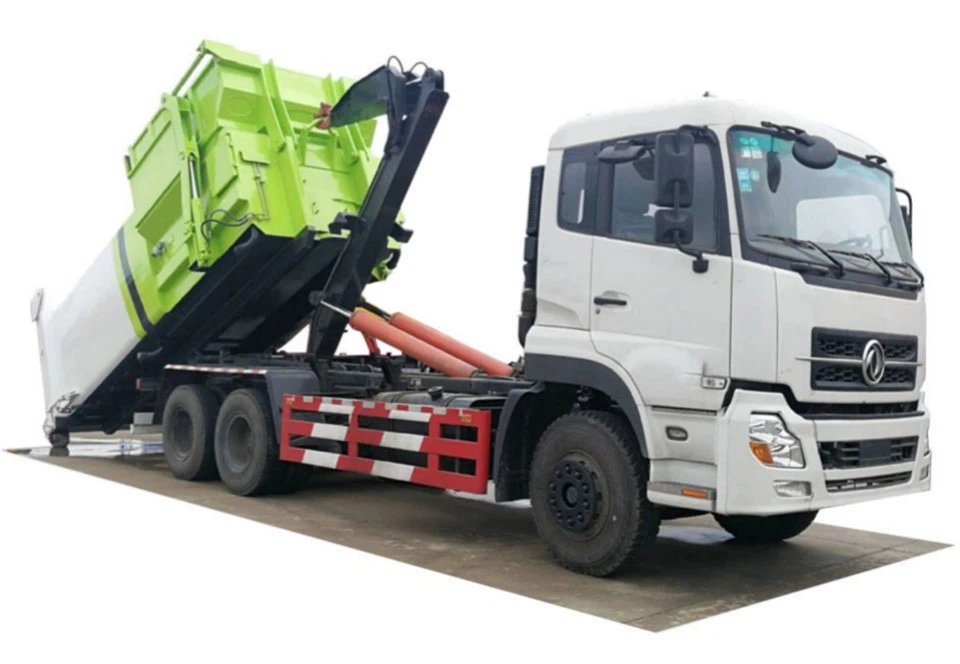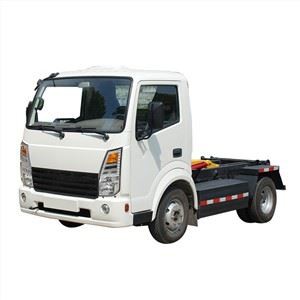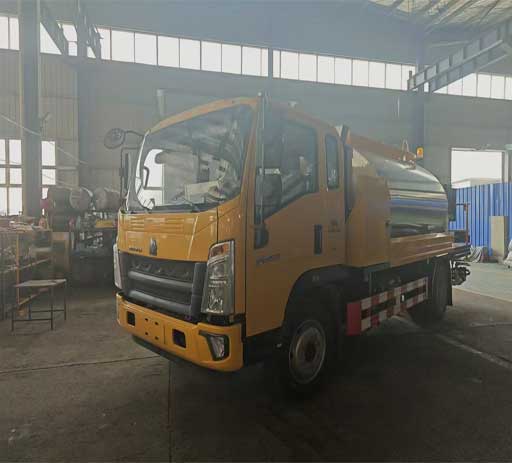Understanding Rolloff Dumpster Trucks: A Comprehensive Guide

Introduction
Rolloff dumpster trucks play a vital role in waste management services, construction sites, and residential cleanouts. These specialized vehicles facilitate the efficient transport of large quantities of waste, making them an essential tool for both businesses and homeowners. In this article, we will explore everything you need to know about rolloff dumpster trucks, from their operational mechanisms to practical tips for choosing the right one for your needs. Whether you’re a contractor, a waste management professional, or just someone looking to declutter, this guide is for you.
What is a Rolloff Dumpster Truck?
A rolloff dumpster truck is a heavy-duty vehicle designed to transport large, open-top containers—commonly known as dumpsters—to various locations. These trucks have a unique system that allows them to load and unload dumpsters efficiently. Typically, the dumpsters are used for disposing of construction debris, household items, or commercial waste.
How Does a Rolloff Dumpster Truck Work?
Rolloff dumpster trucks operate using a hydraulic system that enables the truck to tilt and roll off the dumpster. The process involves the following steps:
- The truck approaches the designated area.
- A hydraulic arm lifts the forward end of the dumpster to an angle.
- The dumpster rolls off the truck and into position.
- To pick up the dumpster, the truck reverses towards it, re-engages the hydraulic system, and lifts the dumpster back onto the truck bed.
The Components of a Rolloff Dumpster Truck
Understanding the components of a rolloff dumpster truck can help you appreciate its capabilities:
- Chassis: The main structure of the truck that holds the engine, transmission, and other essential parts.
- Hydraulic System: Controls the lifting and lowering of the dumpster.
- Roll-off Container: The dumpster itself, available in various sizes (10, 20, 30, 40 yards).
- Tires: Heavy-duty tires capable of supporting the truck’s weight and navigating rough terrain.
Types of Rolloff Dumpster Trucks
There are various types of rolloff dumpster trucks tailored for different needs and waste types. Understanding these can guide you in selecting the appropriate vehicle for your project.
Standard Rolloff Trucks
These trucks are the most common type, compatible with standard rolloff containers. They typically have a capacity ranging from 10 to 40 yards.
Multi-axle Rolloff Trucks
For heavier loads, multi-axle trucks distribute the weight more evenly and provide better stability. They can transport larger or heavier rolls due to their additional wheels.
Rear-load Rolloff Trucks
Rear-load rolloff trucks have their hydraulic system positioned at the back, which allows for a compact design and easier maneuverability in tight spaces.
Choosing the Right Rolloff Dumpster Truck

Selecting the right rolloff dumpster truck depends on several factors, including the type of waste being disposed of, the volume of waste, and the project’s specific requirements.
Considerations When Choosing
- Weight Capacity: Ensure the truck can handle the weight of the materials you are disposing of.
- Type of Waste: Different trucks are better suited for construction debris versus household waste.
- Accessibility: Consider the access routes to ensure the truck can easily navigate the area where the dumpster will be used.
- Local Regulations: Check for any local regulations regarding dumpster placement and waste disposal.
The Importance of Size in Rolloff Dumpsters
Choosing the correct size dumpster is crucial for optimizing your waste removal process. Sizes typically range from 10 to 40 cubic yards.

Common Dumpster Sizes
| Size (Cubic Yards) | Best For | Approximate Weight Limit |
|---|---|---|
| 10 | Small renovations, cleanouts | 2,000-2,500 lbs |
| 20 | Medium renovations, garage cleanouts | 4,000-5,000 lbs |
| 30 | Large renovations, commercial projects | 6,000-7,000 lbs |
| 40 | Major construction jobs; large demolitions | 8,000-10,000 lbs |
Practical Tip for Choosing Size
Estimate the volume of waste by evaluating the items you plan to dispose of. It’s often better to err on the side of a larger dumpster to avoid overloading—this can save you from additional trips and costs.
Rolloff Dumpster Truck Regulations and Safety Guidelines
Understanding the regulations surrounding rolloff dumpster trucks and safety guidelines is essential for responsible waste disposal and compliance.
Federal Regulations
While many regulations are state-specific, federal guidelines often dictate the safety standards for vehicles, including weight limits and vehicle maintenance. Make sure to familiarize yourself with the Department of Transportation (DOT) regulations.
State and Local Regulations
Some states require specific permits for rolloff dumpster operations. It is crucial to check local laws regarding placement and duration for having a dumpster on-site.
Safety Practices
- Ensure the area is clear of obstacles before placing a dumpster.
- Utilize proper signaling when maneuvering the truck.
- Educate workers about safe loading practices to avoid injuries.
Common Uses for Rolloff Dumpster Trucks
The versatility of rolloff dumpster trucks makes them suitable for various applications. Here are some common uses:
Construction and Renovation Projects
Construction sites generate a significant amount of waste, making rolloff dumpster trucks essential for maintaining a clean working environment.
Residential Cleanouts
Whether you’re decluttering your home or preparing for a move, rolloff dumpsters provide a convenient way to dispose of unwanted items.
Landscaping Projects
Landscaping projects often generate debris such as soil, branches, and rocks, which can be efficiently managed using rolloff dumpsters.
Cost Factors Associated with Rolloff Dumpster Trucks
Understanding the costs involved with rolloff dumpster trucks can help you budget for your project.
Factors Affecting Cost
- Location: Prices may vary based on geographic area and demand.
- Size of the Dumpster: Larger dumpsters generally cost more than smaller ones.
- Length of Rental: The longer the rental period, the higher the cost.
- Type of Waste: Certain types of waste may incur additional fees due to special handling requirements.
Estimating Costs
Most companies will provide a flat rate for dumpster rental, which often includes delivery, pick-up, and disposal fees. For more extended projects, inquire about weekly or monthly rates.
Best Practices for Using Rolloff Dumpsters
For maximum efficiency and safety, follow these best practices when using rolloff dumpsters.
Loading Practices
- Distribute weight evenly within the dumpster to avoid tipping.
- Break down large items to maximize space.
- Avoid overfilling; follow the fill line to ensure safe transport.
Proper Placement
Ensure that the dumpster is placed on a stable, flat surface and away from power lines or other hazards.
Frequently Asked Questions (FAQ)
What is the typical weight limit for a rolloff dumpster?
The weight limit varies by size; typically, a 10-yard dumpster has a limit of around 2,000 lbs, while a 40-yard dumpster can handle up to 10,000 lbs.
How long can I keep a rolloff dumpster?
Rental periods vary but often range from 3 to 14 days. Additional fees may apply for extended rentals.

Can I put hazardous materials in a rolloff dumpster?
No, hazardous materials such as chemicals, paints, and batteries are prohibited. Check with your local landfill for proper disposal methods.
What is the process for picking up the dumpster?
When you’re ready to have the dumpster picked up, contact the rental company. They will send a truck to retrieve it at the scheduled time.
Are there any additional fees I should be aware of?
Additional fees may include overage fees for exceeding weight limits, extended rental fees, and charges for prohibited items. Always clarify with the rental company in advance.
How often should I have a rolloff dumpster emptied?
This depends on the project size and waste generation rate. For a large project, weekly pickups may be necessary to avoid overflow.
